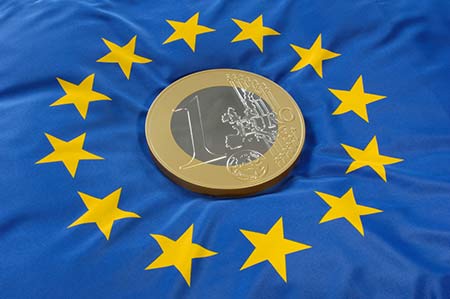The European Central Bank’s decision to refrain from introducing an additional rate cut boosted the Euro against its rivals yesterday and the common currency achieved a two-month high against its US counterpart.
However, while the Euro was riding high against the majority of its peers, it wasn’t able to outdo a bullish Australian Dollar.
Over the last few days the ‘Aussie’ has enjoyed a reversal of fortunes thanks to a string of unexpectedly upbeat domestic reports.
Australia’s growth, retail sales and trade balance data all surprised to the upside, not only adding to the case for the Reserve Bank of Australia refraining from introducing an additional rate cut over the next few months but supporting the prospect of a rate increase.
Although last night’s AiG Performance of Construction Index for February came in at 44.2, down from 48.2 in January and below the 50 mark separating growth from contraction, the ‘Aussie’ held on to recent gains.
In the past the RBA has attempted to talk down the strength of the Australian Dollar by emphasising the negative economic impact of a bullish local currency.
But any dips in the ‘Aussie’ triggered by such comments have been brief and the central bank may have to adopt more aggressive language if it wants to drive the currency lower.
In the view of Singapore-based industry expert Annette Beacher; ‘The RBA has boxed itself in now since ramping up the verbal intervention after the August cut. If they don’t talk it down, it will go to the moon.’
Similarly, currency strategist Todd Elmer stressed that by moving to a neutral bias on rates the RBA had undermined its attempts to keep the ‘Aussie’ lower through verbal intervention. He commented that ‘By removing the threat of lower interest rates, there is less reason for investors to take RBA rhetoric on FX seriously, because this is the most powerful tool at policy makers’ disposal for impacting the exchange rate.’
If Australian data continues this current trend of coming in above forecast it will take a firm stance from the RBA or negative news from China to knock the ‘Aussie’ lower in the weeks ahead.
Before the weekend modest EUR/AUD movement may occur in response to German industrial production data.
Economists have forecast that production increased by a seasonally adjusted 0.8 per cent in February, month-on-month, following a decline of 0.6 per cent in January.
Next week Australia’s business/consumer confidence reports and home loans data could impact the EUR/AUD pairing, but the most influential data to come out of the South Pacific will be Australia’s employment figures.
Euro (EUR) Exchange Rates
[table width=”100%” colwidth=”50|50|50|50|50″ colalign=”left|left|left|left|left”]
Currency, ,Currency,Rate ,
Euro, ,US Dollar,1.3868,
,US Dollar,1.3868,
Euro, ,British Pound,0.8285,
,British Pound,0.8285,
Euro, ,Australian Dollar,1.5243,
,Australian Dollar,1.5243,
Euro, ,New Zealand Dollar,1.6343,
,New Zealand Dollar,1.6343,
Euro, ,Canadian Dollar,1.5254,
,Canadian Dollar,1.5254,
[/table]



